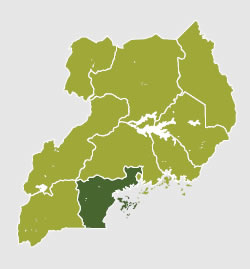Uganda
Factors Affecting Nutrition around Uganda: District and Subregional Snapshots
Uganda, like other Scaling Up Nutrition (SUN) countries, is facing competing demands for time, human resources, and funding within the realm of nutrition programming. The priorities assigned by the international agreements to which Uganda is a signatory (such as SUN, the Millennium Development Goals [MDGs], and others) include a wide array of goals and corresponding targets, many of which are integrated into Uganda’s nutrition action plan (UNAP).
Central 1
DESCRIPTION OF CENTRAL 1 CHARACTERISTICS (IN COMPARISON TO OTHER SUBREGIONS)

Location: Rural
Households in lowest national wealth quintile*: Below Average (6%)
Households reporting conflict or raiding as an issue: Below Average (0%)
Promoting Compliance to Iron–Folic Acid Intake in Pregnant Women in Uganda: Prioritizing the Myriad of Factors
Authors: Alex Mokori1, Manisha Tharaney2, Jack Fiedler2, Adera Asasira1, Caroline Agabiirwe Noel1, Timothy Williams2, Fred Werikhe1
Introduction: SPRING/Uganda is promoting the intake and compliance to iron and folic acid (IFA) supplements among pregnant women in southwestern Uganda to reduce anemia levels estimated at 24% at national level and 11% in southwestern Uganda (UBOS & Macro International 2011).
Food Fortification Monitoring and Evaluation Framework: Operationalizing the Uganda National Fortification Guidelines
Authors: A. Muzoora1, E. Madraa1, S. Ngalombi2, M. Kyenkya1, N. Adero1
Pagination
- Previous page
- Page 19
- Next page